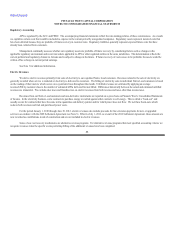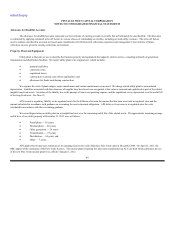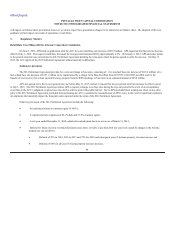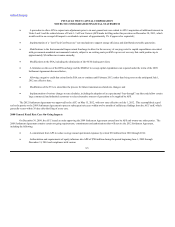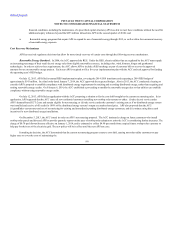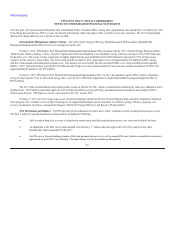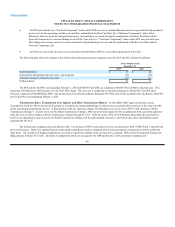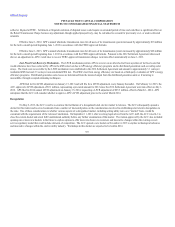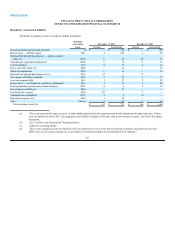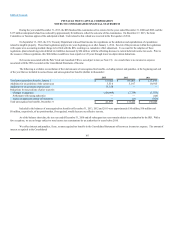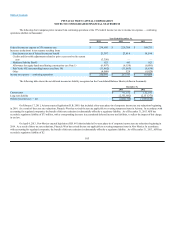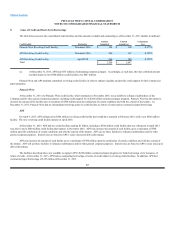APS 2013 Annual Report Download - page 101
Download and view the complete annual report
Please find page 101 of the 2013 APS annual report below. You can navigate through the pages in the report by either clicking on the pages listed below, or by using the keyword search tool below to find specific information within the annual report.
Table of Contents
PINNACLE WEST CAPITAL CORPORATION
NOTES TO CONSOLIDATED FINANCIAL STATEMENTS
electrical grid. ACC professional staff and the state’s Residential Utility Consumer Office, among other organizations, also agreed that a cost shift exists. The
fixed charge does not increase APS’s revenue, but instead will modestly reduce the impact of the cost shift on non-solar customers. The ACC acknowledged
that the new charge addresses only a portion of the cost shift.
Demand Side Management Adjustor Charge. The ACC Electric Energy Efficiency Standards require APS to submit a Demand Side
Management Implementation Plan for review by and approval of the ACC.
On June 1, 2011, APS filed its 2012 Demand Side Management Implementation Plan consistent with the ACC’s Electric Energy Efficiency Rules,
which became effective January 1, 2011. The 2012 requirement under such standards is for cumulative energy efficiency savings of 3% of APS retail sales
for the prior year. This energy savings requirement is slightly higher than the goal established by the 2009 Settlement Agreement (2.75% of total energy
resources for the same two-year period). The ACC issued an order on April 4, 2012, approving recovery of approximately $72 million of APS’s energy
efficiency and demand side management program costs. This amount was recovered by the then existing DSMAC over a twelve-month period beginning
March 1, 2012. This amount does not include $10 million already being recovered in general retail base rates, but does include amortization of 2009 costs
(approximately $5 million of the $72 million).
On June 1, 2012, APS filed its 2013 Demand Side Management Implementation Plan. In 2013, the standards require APS to achieve cumulative
energy savings equal to 5% of its 2012 retail energy sales. Later in 2012, APS filed a supplement to its plan that included a proposed budget for 2013 of
$87.6 million.
The ACC Staff recommendation and proposed order, issued on October 30, 2013, largely recommended continuing the status quo, although at lower
funding levels. ACC Staff recommended approval of all existing cost-effective energy efficiency and demand response programs and a budget of $68.9
million going forward. APS expects to receive a decision from the ACC in early 2014.
On June 27, 2013, the ACC voted to open a new docket investigating whether the Electric Energy Efficiency Rules should be modified or abolished.
This spring the ACC will hold a series of three workshops to investigate methodologies used to determine cost effective energy efficiency programs, cost
recovery mechanisms, incentives, and potential changes to the Electric Energy Efficiency and Resource Planning Rules.
PSA Mechanism and Balance. The PSA provides for the adjustment of retail rates to reflect variations in retail fuel and purchased power costs.
The PSA is subject to specified parameters and procedures, including the following:
· APS records deferrals for recovery or refund to the extent actual retail fuel and purchased power costs vary from the Base Fuel Rate;
· an adjustment to the PSA rate is made annually each February 1 (unless otherwise approved by the ACC) and goes into effect
automatically unless suspended by the ACC;
· the PSA uses a forward-looking estimate of fuel and purchased power costs to set the annual PSA rate, which is reconciled to actual costs
experienced for each PSA Year (February 1 through January 31) (see the following bullet point);
97
st



